Blog
The Ocean Cleanup Project continues. The new system aims to clean both oceans and rivers
The Dutch organization’s goal is to clean the world’s 1,000 most polluting rivers by 2025.
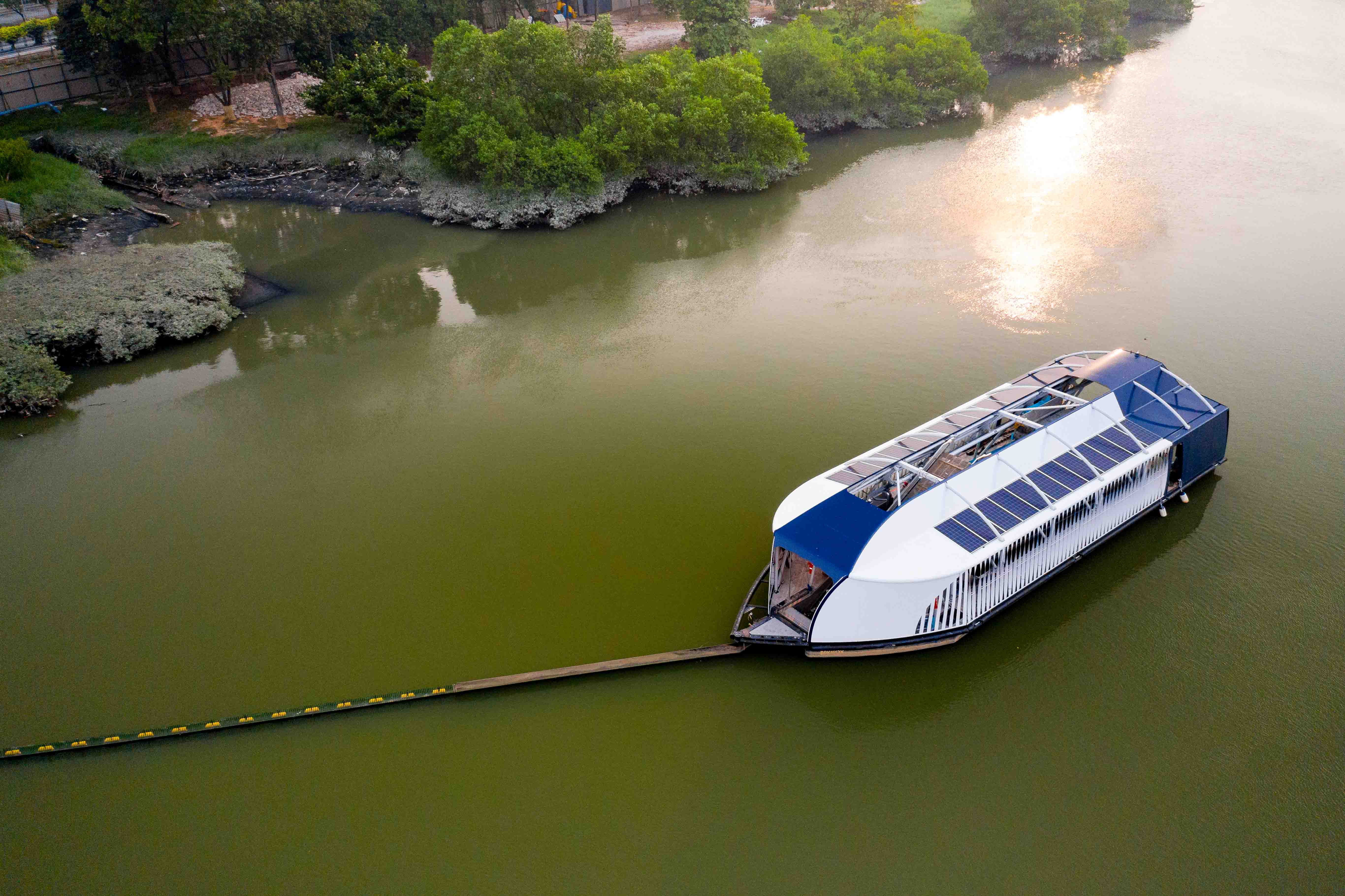
About 1,000 rivers is responsible for 80% of the ocean pollution. Therefore, it is crucial to clean both oceans and especially rivers. The Ocean Cleanup, a non-profit organization, aims to tackle this issue using its latest system.
“To truly rid the oceans of plastic, we need to both clean up the legacy and close the tap, preventing more plastic from reaching the oceans in the first place. Combining our existing technology with the new Interceptor will do the job,“ said Boyan Slat, the innovator and founder of The Ocean Cleanup .
How does it work
From the outside, the Interceptor resembles a ship or a boat. From the inside, it’s been designed to suit its purpose, i.e. to extract the plastics from rivers.
A barrier is used to intercept the plastic and other forms of pollution, carrying it onto the conveyor belt, which continuously distributes the waste to special dumpsters placed on the Interceptor.
The innovators were well-prepared for the efficient filling of the dumpsters too. A smart system recognizes which dumpster is not full and decides which one to fill with the waste.
As the Interceptor constantly follows the natural current of the river, the debris collection is even more efficient. The Interceptor is solar-powered. Should the Interceptor stop, it depends on the current of the river to carry off the trash to the collection system.
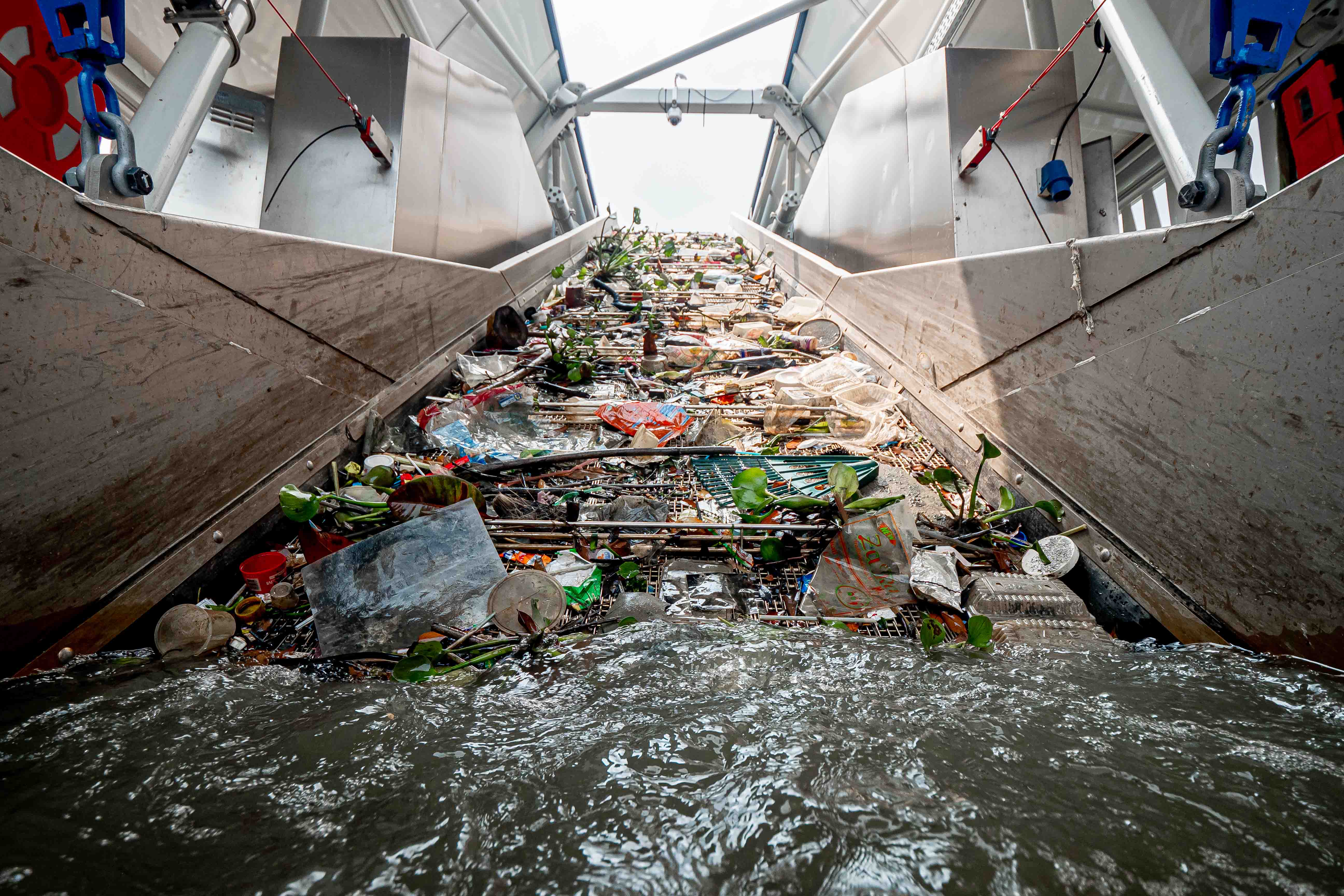
The waste is moved to the dumpsters on a conveyor belt. Retrieved from: Theoceancleanup.com
The built-in Li-ion batteries allow the Interceptor to be deployed in the night time. Thanks to special parts, the vessels will reach higher energy capacity and prevent noise transmission and dissemination of gases.
More enhancements
The potential wave of skepticism about the new system is proven wrong with more innovative solutions. Although the Interceptor moves autonomously, it can also be monitored from the land. The internet-connected onboard computer allows us to monitor the machine performance, energy use, and state of the components. And there is more!
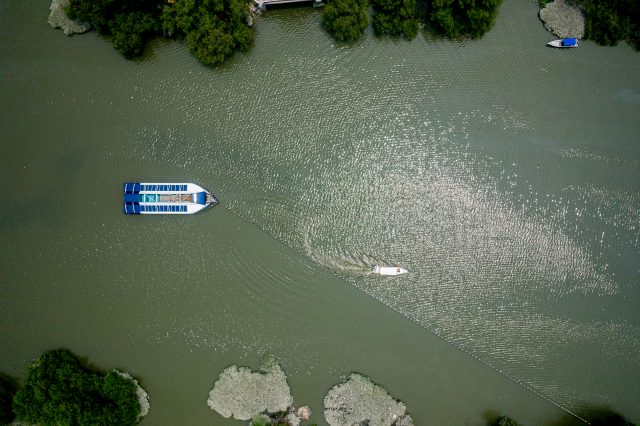
Retrieved from: Theoceancleanup.com
The special barrier, guiding plastics towards the conveyor belt, was designed not to interfere with other vessels’ routes in order not to pose any threats to the vessels and sea animals.
When everything goes according to the plan, the Interceptor can extract 50,000 kilograms of plastic per day. Under ideal conditions, even 100,000kg! When the dumpsters are full, the trash is moved for recycling.
Placement of Interceptor
As Boyan Slat already mentioned, he wants to use the Interceptor collection boat to clean world's 1,000 most polluting rivers. These, however, amount to only 1% of watercourses but cause 80% of the ocean pollution.
In order to start the cleaning as soon as possible, four Interceptors have been deployed since their commencement on October, 2019. One of them is currently placed on the Klang River, Malaysia. The second one helps to clean the rivers in Jakarta which suffers from huge amounts of plastic both in the water and on the land.
The third Interceptor is going to extract waste from the delta of the Mekong River, Vietnam and the last one in Santo Domingo, the capital of the Dominican Republic.
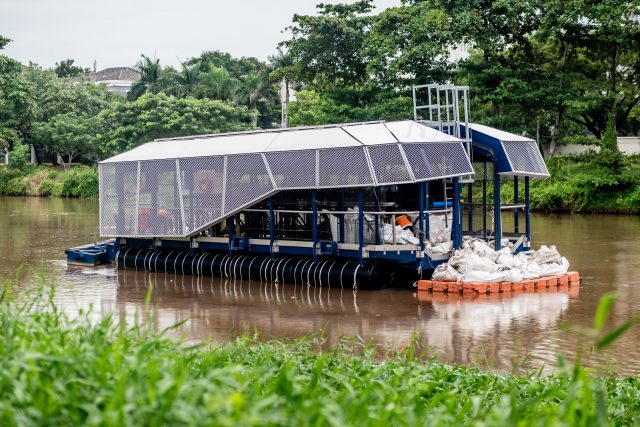
The deployed Interceptor in Jakarta. Retrieved from: Theoceancleanup.com
Furthermore, agreements are being made to deploy more Interceptors. Bangkok and LA County have already expressed interest in placing the Interceptors in their respective territories.
How it all started
Boyan Slat was only 18 years of age when he came up with the idea of cleaning the oceans. Shortly after, in 2013, The Ocean Cleanup was founded. Its main milestone was an innovative device with 600-metres-long float and a “veil” capturing the plastic.
The first prototype, System 001, was, however, returned to shore as the constructors encountered challenges with the float speed and construction-related flaws. The prototype has been redesigned and placed in the polluted Great Pacific Garbage Patch between Hawaii and California again.
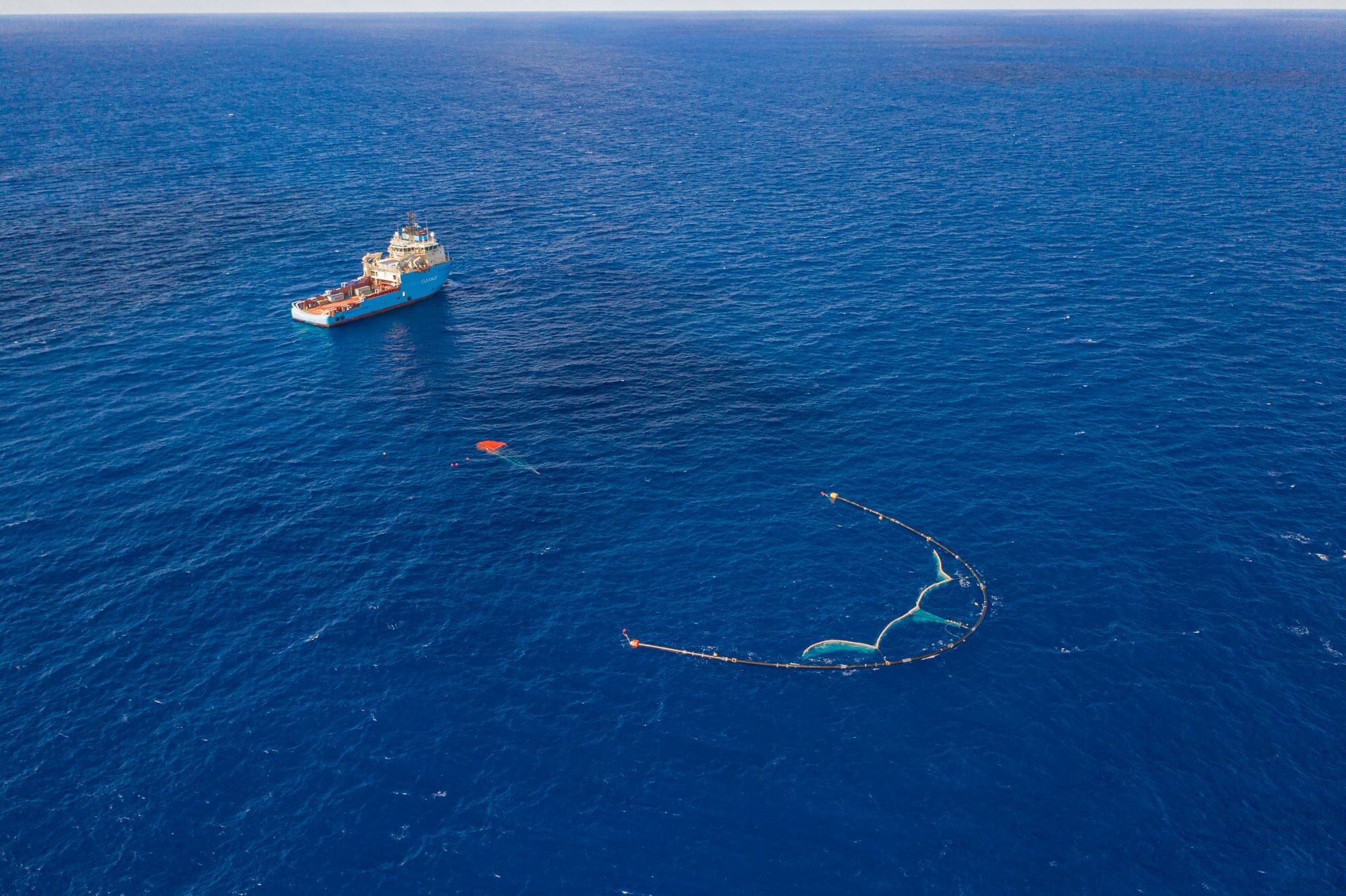
Prototype of the Interceptor system to clean oceans. Retrieved from: Facebook/TheOceanCleanup
The improved System 001/B was proven, allowing the experts could begin to design System 002. All modifications learned during the tests of the System 001/B have been implemented when the system development developed.
Just like the Interceptor, System 002 is also solar-powered. After the capture, the plastics will return to the land for recycling. The Ocean Cleanup's goal is to clean 90% of the world's oceans by 2040 using this system.
More articles
Explosive environments seminar
Creation of an explosive environment is also a threat at wastewater treatment plants. This applies more or less to technologies that use anaerobic...
